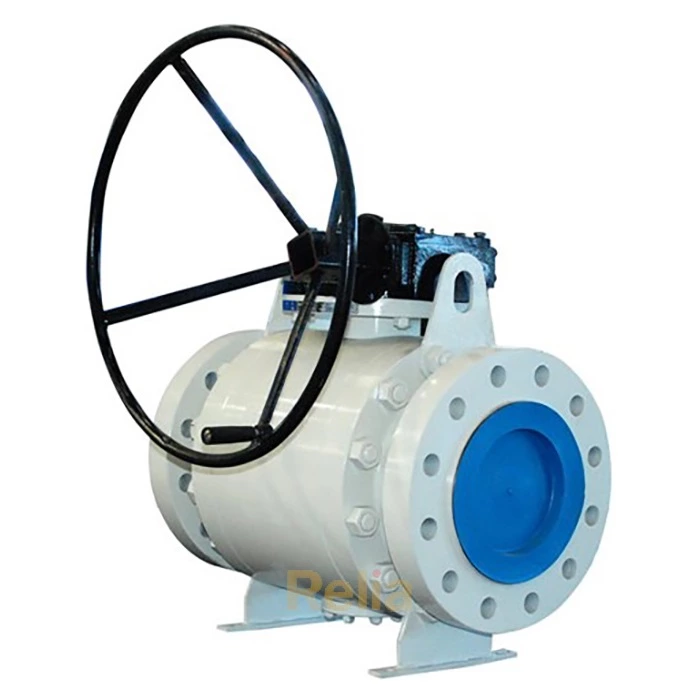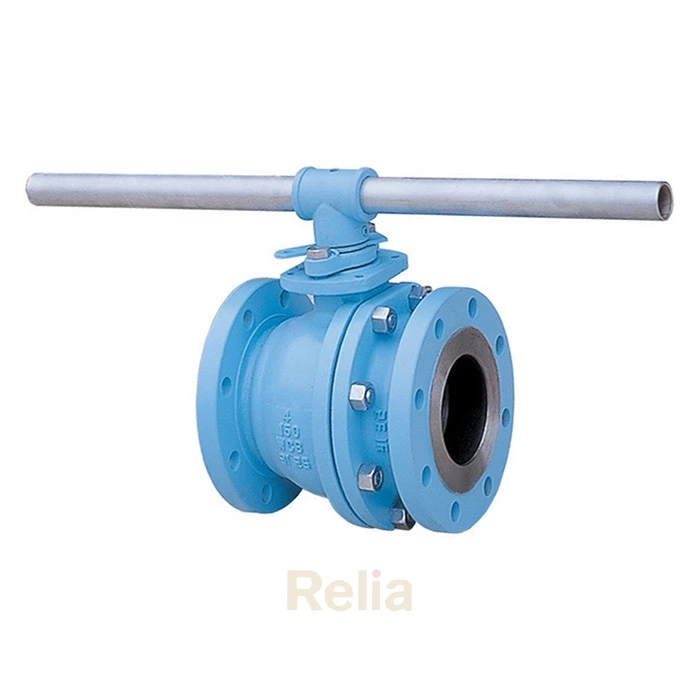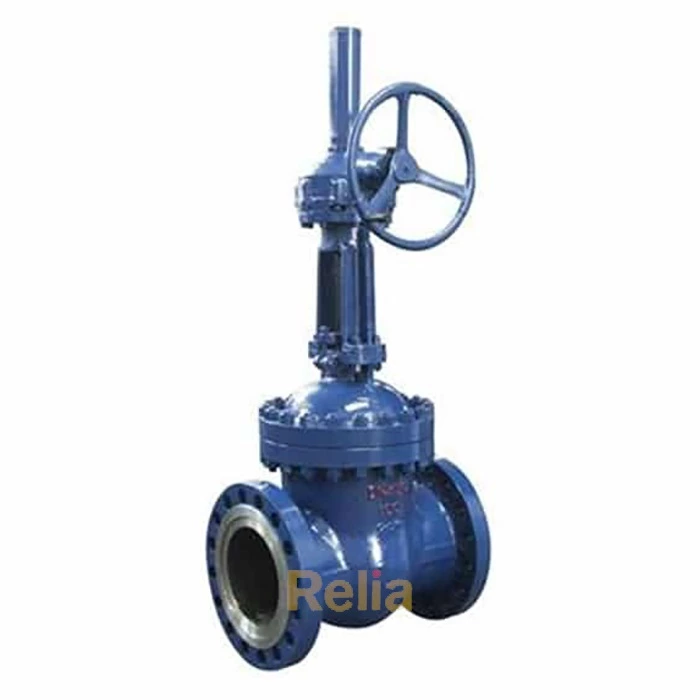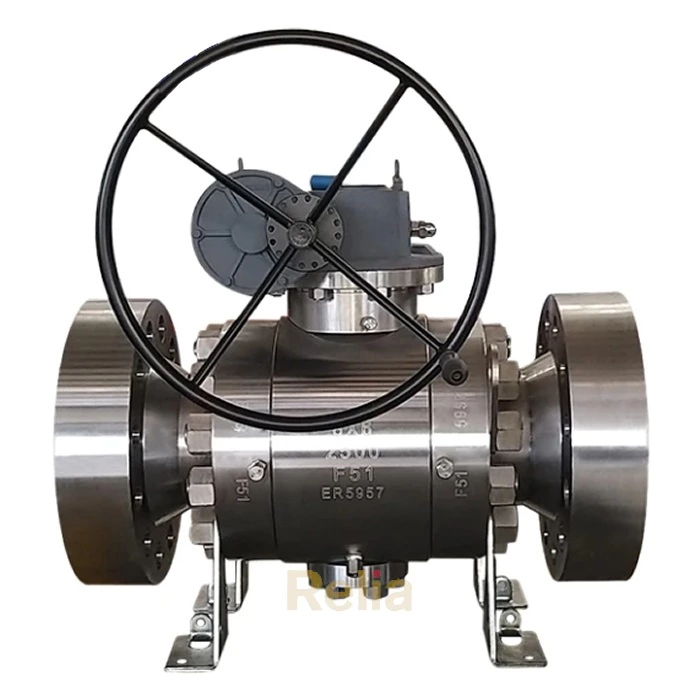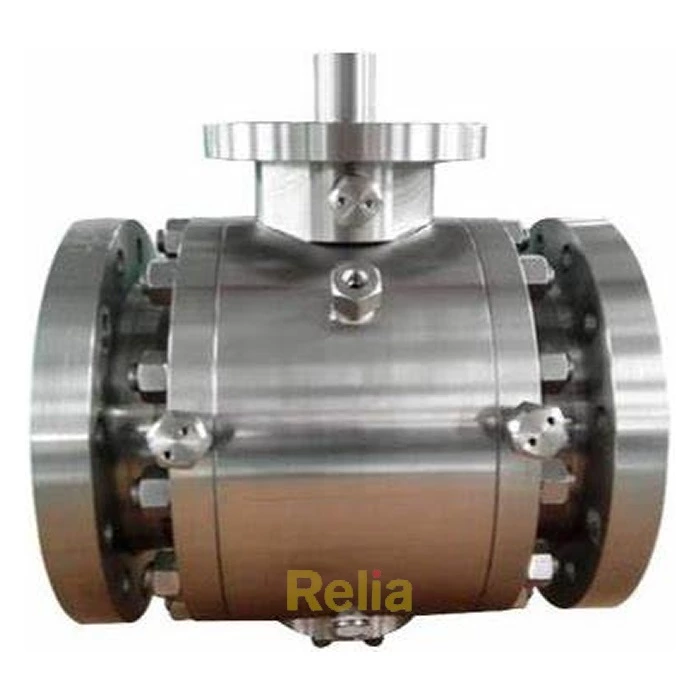BS 6755 - Part 1: Pressure Testing of Valves
BS 6755 standard: Testing of valves
BS 6755 is published in two Parts:
- BS 6755 Part 1: Specification for production pressure testing requirements;
- BS 6755 Part 2: Specification for fire type-testing requirements.
BS 6755 Part 1 specifies production pressure testing requirements and describes in appendix D tests to confirm the pressure containing capability of the shell of a valve under pressure, and tests verifying the degree of tightness and pressure-retaining capability of the valve seat(s) and/or closure mechanism.
Where requirements in a valve product standard differ from those given in this standard then the requirements of the product standard apply.
Table 1 — Maximum permissible seat test leakage rates
| Test | Rate A | Rate B (mm 3 /s ) | Rate C (mm 3 /s ) | Rate D (mm 3 /s ) |
| Hydrostatic test | No visually detectable leakage for the duration of the test time as given in the appropriate valve product standard or appendix B, as appropriate |
0.01 × DN | 0.03 × DN | 0.1 × DN |
| Pneumatic test | No visually detectable leakage for the duration of the test time as given in the appropriate valve product standard or appendix B, as appropriate |
0.3 × DN | 3.00 × DN | 30 × DN |
NOTE 1- Equivalent leakage rates for ISO 5208 and BS 5146-2 are given in appendix A.
NOTE 2- No visually detectable leakage may be demonstrated during a pneumatic test in accordance with 4.3.
NOTE 3- The leakage rates only apply when discharging to ambient conditions.
NOTE 4- No visual leakage is accepted as being within the requirements of rates A, B, C and D.
NOTE 5- See note to Table 5 for large size Class rated valves.
Table 2 — Maximum permissible back seat test leakage rates
| Test | Rate A | Rate B (mm 3 /s ) | Rate C (mm 3 /s ) | Rate D (mm 3 /s ) |
| Hydrostatic test | 0.03 × DN | 0.03 × DN | 0.03 × DN | 0.1 × DN |
| Pneumatic test | 3.00 × DN | 3.00 × DN | 3.00 × DN | 30 × DN |
NOTE 1- The rate or rates of each test leakage for each valve type are specified in the appropriate valve product standard.
NOTE 2- The leakage rates only apply when discharging to ambient conditions.
NOTE 3- No visual leakage is accepted as being within the requirements of rates A, B, C and D.
NOTE 4- See note to Table 5 for large size Class rated valves.
Appendix A - Equivalent leakage rates
Equivalent leakage rates for this Part of BS 6755, BS 5146-2 and ISO 5208 are given in Table 3.
Table 3 — Equivalent leakage rates
| This part of BS 6755 (a) |
BS 5146-2 | ISO 5208 |
| A | 3 | 3 |
| B | 2 | 2 |
| C | 1A | - |
| D | 1 | 1 |
Note- (a) See Table 1.
Appendix B - Test durations
Table 4, which is for guidance only, may be used where an appropriate valve product standard does not exist or where test times are not specified in a standard. In those cases where the appropriate valve product standard specifies different minimum test durations than those given in Table 4, the requirement of that valve product standard applies.
Table 4 — Test durations
| Nominal valve size DN | Minimum test durations: hydrostatic or pneumatic (S) | |||
| Shell test | Seat Test | Back seat test | ||
| Metal seated | Elastomeric or polymeric seated |
|||
| Up to and including DN 50 | 15 | 15 | 15 | 10 |
| DN 65 up to and including DN 200 | 60 | 30 | 15 | 15 |
| DN 250 up to and including DN 450 | 180 | 60 | 30 | 20 |
| DN 500 and greater | 180 | 120 | 60 | 30 |
Appendix C - Equivalent sizes of valves having flanged ends, threaded ends, weld ends and capillary or compression ends
Equivalent sizes of valves having flanged ends, threaded ends, welded ends and capillary or compression ends complying with BS 864-2 and BS 864-3 and BS 2051-1 are given in Table 5.
Table 5 — Equivalent sizes of valves
| Type of valve ends | ||||
| Flanged, threaded or weld ends | Capillary or compression ends | |||
| PN rated valves excluding threaded end valves |
Class rated and threaded a end valves |
BS 864-2 | BS 864-3 | BS 2051-1 |
| DN | mm | mm | ||
| - | 1/4 | 8 | - | - |
| 10 | 3/8 | 10 and 12 | 3/8 | 10 and 12 |
| 15 | 1/2 | 15 and 18 | 1/2 | 15, 16 and 18 |
| 20 | 3/4 | 22 | 3/4 | 20 and 22 |
| 25 | 1 | 28 | 1 | 26 and 28 |
| 32 | 1-1/4 | 35 | 1-1/4 | 30 and 35 |
| 40 | 1-1/2 | 42 | 1-1/2 | 38 and 42 |
| 50 | 2 | 54 | 2 | - |
| 65 | 2-1/2 | 67 | - | - |
| 80 | 3 | - | - | - |
| 100 | 4 | - | - | - |
| 125 | 5 | - | - | - |
| 150 | 6 | - | - | - |
| 200 | 8 | - | - | - |
| 250 | 10 | - | - | - |
| 300 | 12 | - | - | - |
| 350 | 14 | - | - | - |
| 400 | 16 | - | - | - |
| 450 | 18 | - | - | - |
| 500 | 20 | - | - | - |
| 600 | 24 | - | - | - |
NOTE- For Class rated valves above size 24, the nominal bore size of the valve should be converted into millimetres and this value should be used instead of “DN” when calculating leakage rates in Table 1 and Table 2.
Threaded end valves can also be PN rated.
Appendix D - Pressure tests
D.1 Apparatus
D.1.1 General
The test apparatus shall be of such a design that it does not subject the valve to externally applied stress affecting the results of the tests
D.1.2 Specific apparatus
D.1.2.1 Industrial pressure gauges, complying with the requirements for accuracy of BS 1780 and having a full scale reading of not more than 4 times and not less than 1.5 times the test pressure.
Pressure gauges shall be checked for calibration and adjusted if necessary at intervals not exceeding 6 months and the results shall be recorded.
NOTE- Guidance on measurement and calibration systems can be found in BS 5781-1 and BS 5781-2.
When equipment such as volume loss devices or digital pressure indicators are used, the manufacturer shall be capable of demonstrating the equivalence of the test system with the requirements of this Part of BS 6755.
D.2 Test fluid
The test fluid used for applying the test pressure shall be one of the following.
a) Liquid: water, treated with a corrosion inhibitor when necessary, or other liquid whose viscosity at ambient temperature is equal to, or less than, that of water, or kerosene.
NOTE 1- Unless otherwise specified on the enquiry and/or order for the valve, water will be used as the test fluid.
NOTE 2- Attention is drawn to the need to control the chloride content of test water in contact with austenitic stainless steel valves. If a purchaser requires a particular limit on the chloride content of the test water, this should be stated on the enquiry and/or order for the valve.
or
b) Gas: air or inert gas.
WARNING. Pneumatic pressure testing is potentially a much more dangerous operation than hydrostatic pressure testing. Attention is drawn to the following.
1) The adequacy of protection for personnel carrying out the testing in the event of failure of a valve, connection or equipment during the test.
2) The extent of the test area cleared for safety purposes.
Attention is drawn to the fact that if the gas pressure is reduced to the valve under test from high pressure storage, its temperature will fall.
The test arrangement should be such that the gas entering the valve does not lower the temperature so as to affect the validity of the test.
D.3 General conditions of test
The following general conditions of test shall apply.
a) Valves and connections shall be purged of air when testing with a liquid.
b) To avoid the risk of freezing when the test medium is water the minimum temperature of the water, valve or ambient air during the test shall be not less than 7 °C.
c) No valve undergoing pressure testing shall be subject to any form of shock loading.
d) Valves shall not be painted or coated before shell pressure tests are completed. Pressure containing components shall not be impregnated for the purpose of preventing leakage.
NOTE- This does not preclude the use of surface treatments to prevent corrosion during manufacture and storage.
Internal linings or coatings that form a design feature of the valve are permitted.
D.4 Test pressures
D.4.1 Shell test
For the shell test the test pressures shall be as follows.
a) The hydrostatic shell test pressure shall be 1.5 times the maximum permissible working pressure at 20 °C 3) .
NOTE- For weld end valves which are designed solely for elevated temperature duties where the concept of a maximum
permissible working pressure at 20 °C may not be appropriate, the test pressure requirements given in 26.2.1.3 of BS 759-1:1984 may be applied.
b) The pneumatic shell test pressure shall be 6 bar to 7 bar.
D.4.2 Butterfly valve disk strength test
The hydrostatic disk test pressure shall be 1.5 times the maximum permissible working pressure at 20 °C 3) .
D.4.3 Seat test and back seat test
For the seat test and the back seat test the test pressures shall be as follows.
a) The hydrostatic seat and back seat test pressure shall be 1.1 times the maximum permissible working pressure at 20 °C 3) .
b) The pneumatic seat and back seat test pressure shall be 6 bar to 7 bar.
The following limitations shall apply.
1) Valves with a seat rating less than the maximum permissible working pressure at 20 °C shall be seat tested at a pressure of 1.1 times 3) the maximum seat rating, or subject to a maximum of 6 bar pneumatic.
2) Valves which have obturators and/or actuating devices that would be damaged if the seat test pressure required by a) or b) were applied, shall be seat tested at a pressure of 1.1 times
3) the maximum operating differential pressure, or subject to a maximum of 6 bar pneumatic.
Related Information
API 598: Valve Inspection and Testing
ISO 5208: Industrial valves Pressure testing of metallic valves
